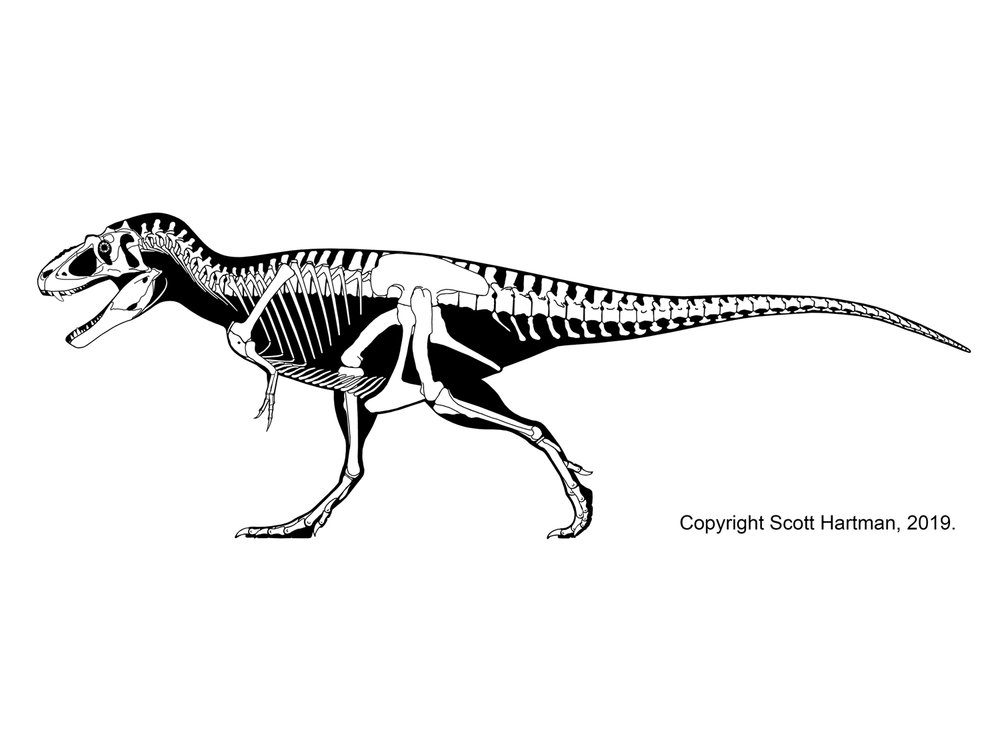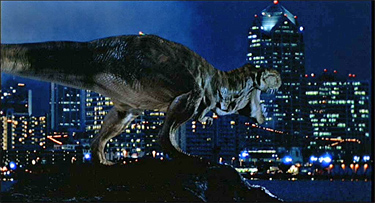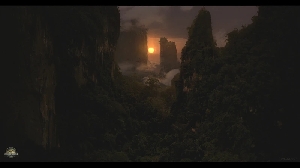The size of Lythronax argestes
Dinosaurs Forum Topic

Carnosaur
MemberCompsognathusFeb 2, 20156050 Views11 Repliesback to doing these...
...maybe...
but anyway,i've been pretty much shocked that rumors of 8-9 meter lythronax are still spamming the interwebz.
so i decided to make a thing.
First, we look at the paper describing Lythronax(and teratophoneus). Here's a link for y'all in case you wanna check it out:
http://journals.plos.org/plosone/article?id=10.1371/journal.pone.0079420
Here's a neat little picture from that paper( Lythronax is the larger of the two)
(A) Skeletal outlines showing recovered elements of Lythronax argestes (UMNH VP 20200) and (B) Teratophoneus curriei (UMNH VP 16690)
i bolded that merely because while the Teratophoneus holotype is thought to be immature (possible subadult), that of Lythronax is not. i will post a relevant section of the paper supporting this in a minute. the catalogue numbers of L. argestes and T. currei seem to have been mixed up, adding to general confusion on which was which.
The teratophoneus is subadult in a nature, as alluded to in the paper. Here's the section stating such:
Teratophoneus curriei Carr et al. 2011 [13]
Material.
The holotype specimen represents a single individual with specimen numbers Brigham Young University (BYU) 8120/9396; BYU 8120/937; BYU 826/9720; BYU 9398; and BYU 13719. This specimen is here collectively referred to as BYU 8120. The newly reported specimen, UMNH VP 16690, is a single associated subadult individual, including most of the skull and axial column, the pelvis and part of the right hind limb (see Figs. 1 and 3)."
with that out of the way, here's what the holotype of Lythronax consists of.
"an associated partial skeleton including right maxilla, both nasals, right frontal, left jugal, left quadrate, right laterosphenoid, right palatine, left dentary, left splenial, left surangular, left prearticular, a dorsal rib, a caudal chevron, both pubes, left tibia, left fibula, and left metatarsals II and IV"
now, if we skip down the diagnosis, this is what we see:
... Lythronax is also diagnosed by the presence of the following unique combination of characters: differs from Alioramus and all other tyrannosauroids exceptTeratophoneus and Bistahieversor in the presence of 11 maxillary alveoli; differs fromAppalachiosaurus, Alioramus and all other tyrannosauroids except Bistahieversor, Tyrannosaurus and Tarbosaurus in having a concave lateral margin of dentary and a broad postorbital process of jugal (relative to total jugal length); differs from all other tyrannosauroids except Tyrannosaurus and Tarbosaurus in having a laterally expanded caudal portion of the skull, such that the orbits are directed rostrodorsally; differs from Gorgosaurus, Albertosaurusand Teratophoneus in having a large, distally expanded pubic boot (with an anterioposterior length at least 60% of total pubic length); and differs from Teratophoneus, Bistahieversor, Tyrannosaurus and Tarbosaurus in possessing a dorsally expanded ascending process of the astragalus (with the height of the ascending process greater than the width of the astragalus and calcaneum)."
see this? nothing stating a subadult nature to the holotype remains. nor is there anything( i.e. unfused sutures) to support the animal being young overall.
Now, turning our attentione back to the reconstructions with the scale bars, we can measure just how big Lythronax is thought to be.
overall, i got measuring along the spinal curve, i got ~6.8 meters. Measuring it in a straight line yielded 7.2 meters. Now, i may be a little off (measuring from scalebars always irked me) but what this proves is that L. argestes wasn't an 8-9 meter animal, those numbers appear to be a media invention.
on a somewhat related not, i like scott hartman's skeletal

He also did a scale comparison of three recent tyrannosaurid discoveries

(from left to right, Teratophoneus, Lythronax, Bistahieversor)
and just to show how "small" lythronax was, Hartman throws in a comparison with Daspletosaurus

That's that, hope y'all enjoyed!
Nature doesn't deceive us; it is we who deceive ourselves.
Replies to The size of Lythronax argestes
Hey Guest, want to add your say?
Are you an avid Jurassic World fan looking for a dedicated online community of likeminded fans? Look no further! Create your own profile today and take part in our forums and gain XP points for all the content you post!

















